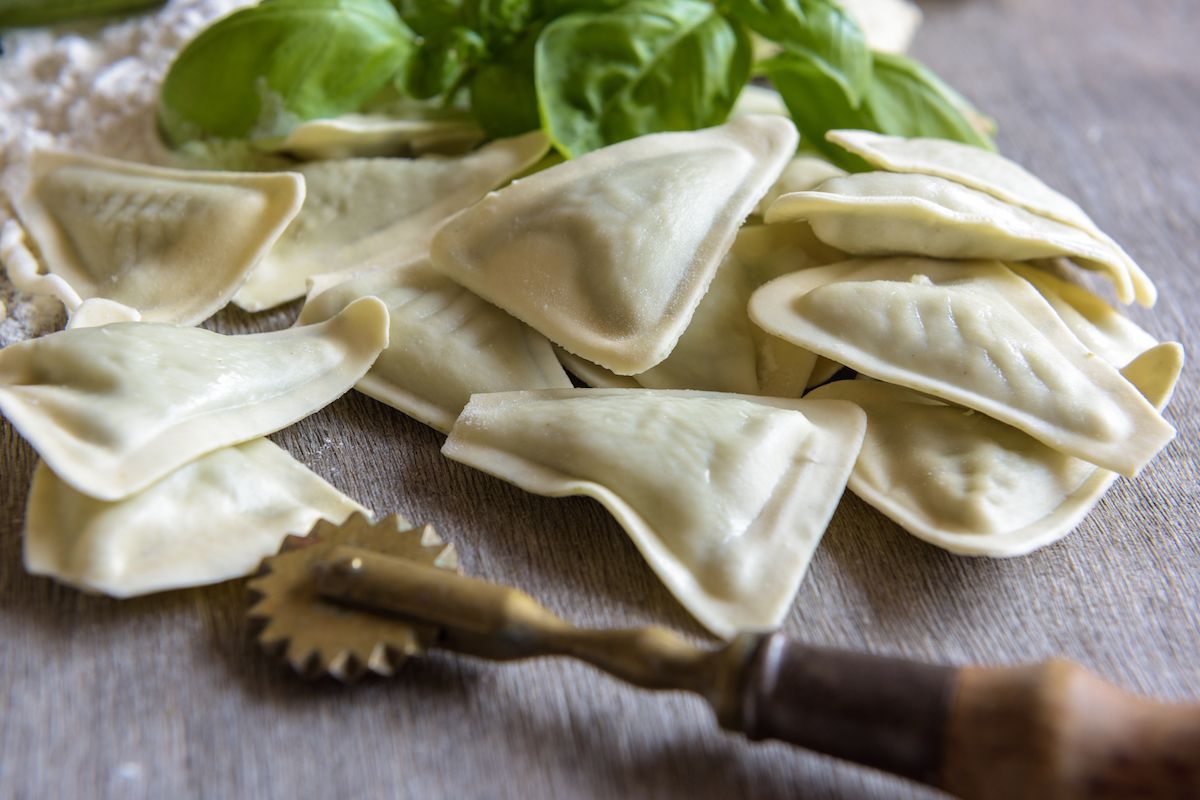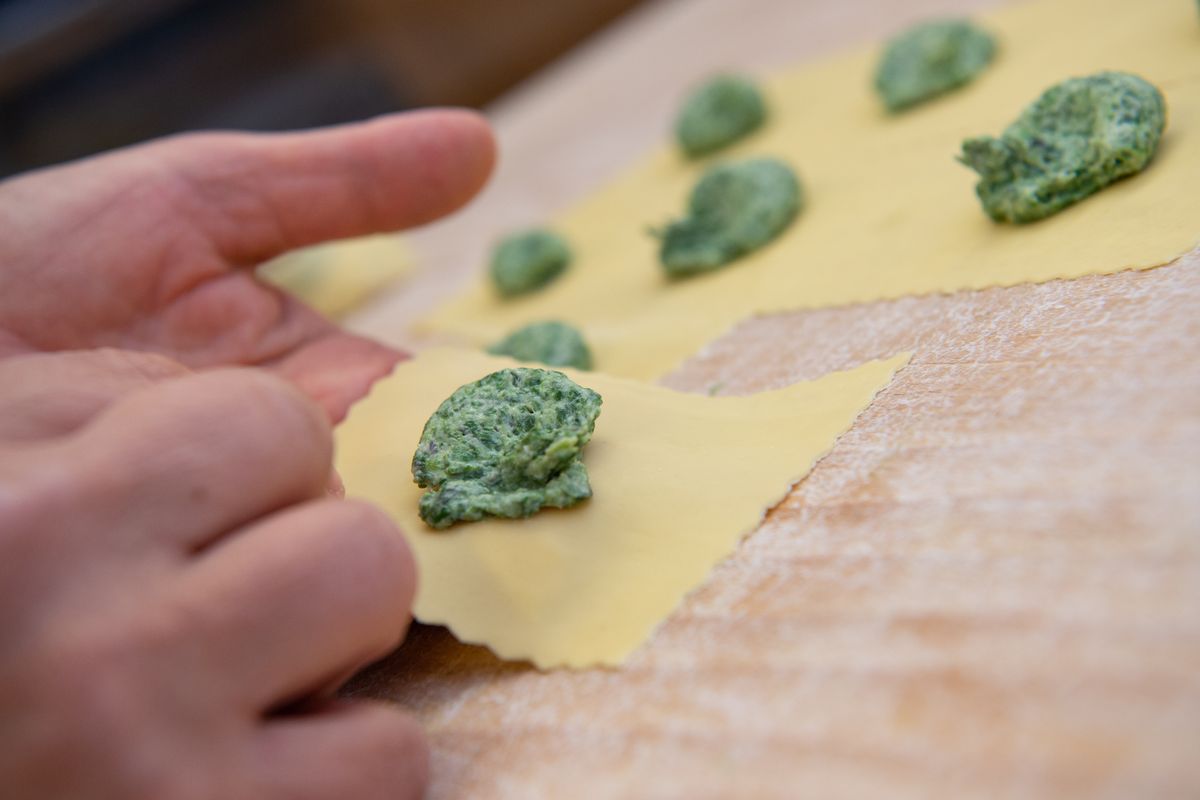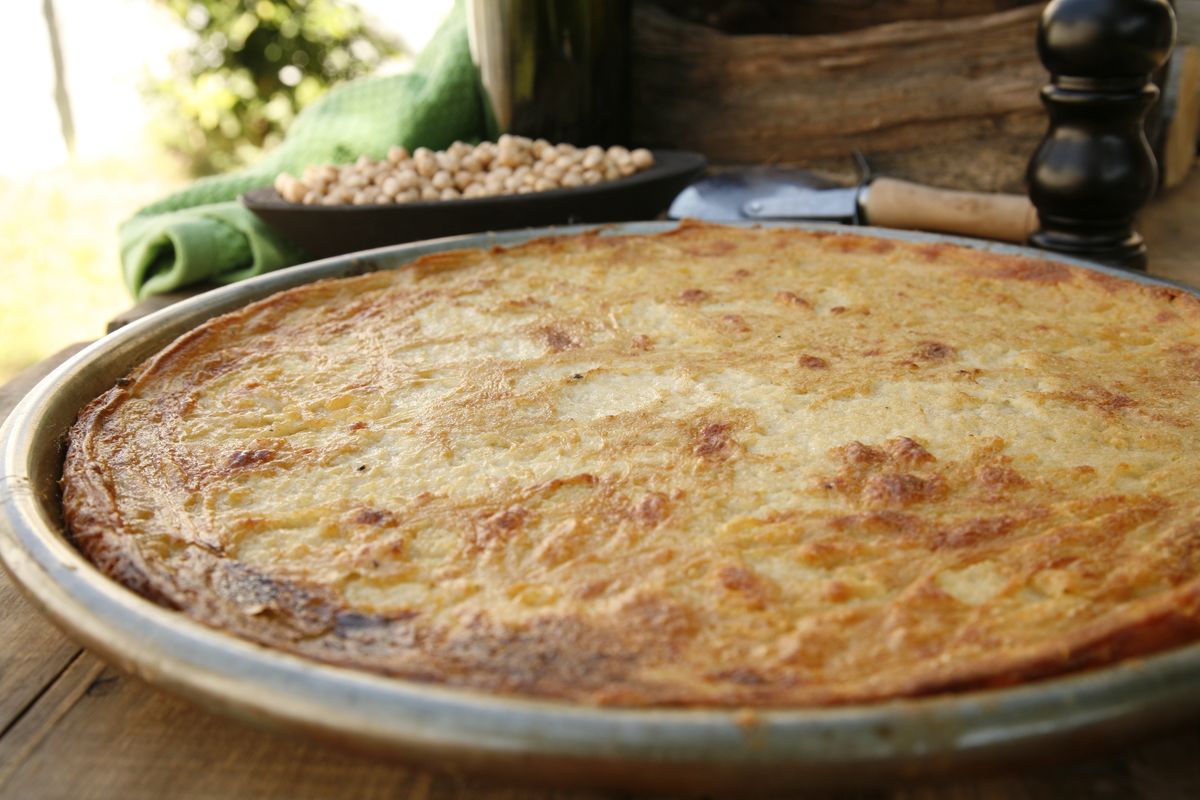Recipes
Pansoti are a delicious dish of Ligurian cuisine: shall we prepare them together?


Ligurian pansoti are ravioli so called because of the characteristic "belly" of filling. Here's how to prepare them with the original recipe.
Ligurian pansoti, often mistakenly called pansotti, are not simple meatless ravioli . Inside a pasta casing they contain all the flavors of this land divided between sea and mountains. In fact, although the most modern versions are prepared with chard and borage , originally a mixture of wild herbs called preboggion was used.
The preboggion varied from family to family and depended greatly on what could be found along the slopes of the region. Among the herbs that compose it there are chard, borage, burnet, dog's tooth, turnip, nettle, cicerbita and parsley.
Furthermore, the original Pansoti recipe did not include the use of ricotta but of a typical Ligurian cheese, prescinseua (the same protagonist of the original recipe for focaccia di Recco). In all these years, only the walnut sauce-based condiment has remained unchanged.

How to prepare the Ligurian pansoti recipe
- First you need to prepare the pasta. Place the flour with the salt in a bowl, then add the white wine and water by mixing. Knead first with a wooden spoon, then by hand to obtain a smooth and homogeneous dough.
- Cover it and let it rest for 30 minutes .
- Now take the mixed herbs and wash them well with water and bicarbonate of soda. Transfer them to a non-stick pan, adding just a drizzle of oil , cover and let them soften. Finally, season with salt and set aside to cool.
- Squeeze them with your hands, to remove the excess water, and chop them with a knife. Add them to the creamed ricotta and yogurt (if you have prescinseua available, use that), together with the marjoram leaves and the grated cheese .
- Now roll out the pastry very thinly, by hand with a rolling pin or with the help of a pasta machine. Using a wheel, cut out squares of approximately 6 cm on each side . Place a teaspoon of filling in the center, then close into a triangle, sealing well.
- When ready to cook them, dip the pansoti in plenty of salted water for 2-3 minutes, draining them al dente directly into the sauce.
We recommend you try pansoti in walnut sauce , a classic from the Eastern Riviera.
Variants
Some people prepare pansoti pasta as if it were egg pasta. If you prefer to follow this route, add 1 egg and as much water as needed to obtain a homogeneous and fairly firm dough (about 60-70 ml).
The filling is truly particular and this is precisely where the goodness of pansoti lies. However, prescinseua is difficult to find locally, let alone outside the region. For this reason you can replace it with half the weight of ricotta and half of plain yogurt without added sugars . Even ricotta alone will be fine but you will lose the acid note that normally characterizes them.
Preboggion itself is difficult to find. The best way to replace it is to use the following herbal mixture: 400 g of chard, 200 g of spinach, 100 g of borage, 100 g of escarole .
Conservation
The uncooked pansoti can be kept in the refrigerator for one or two days. Make sure you spread a layer of semolina on the tray containing them because they could release some of their moisture. You can also freeze them for up to 3 months. Let them harden in the freezer spread out on a tray and once hardened, distribute them in freezer bags.
Origin and history of pansoti
Despite the shape and ingredients, pansoti are a relatively modern dish . As mentioned in the introduction, it has undergone several variations over time and the original flavor given by the skilful combination of wild herbs and that unusual dairy product which is prescinseua has been somewhat lost.
In any case, the first written trace of the dish dates back to 1931 in the book Gastronomic Guide of Italy published by Touring where they are mentioned with the name pansoti cu a salsa de nuge in relation to the municipality of Rapallo, in the Ligurian East. Instead, we will have to wait until 1961 for them to be consecrated, thanks to the Nervi Gastronomic Festival , as a truly typical dish of the region. Today they are a Traditional Agri-Food Product (PAT).
It is not uncommon to hear these triangle-shaped ravioli with their characteristic belly called pansotti . The term is not exactly wrong as it derives from the custom of some provinces in the region to emphasize the last two syllables of words.
Like many typical Ligurian recipes, these too are "lean". In fact, they arose from the need to find alternatives to fish dishes during the Lenten fasts.
Riproduzione riservata © - WT












